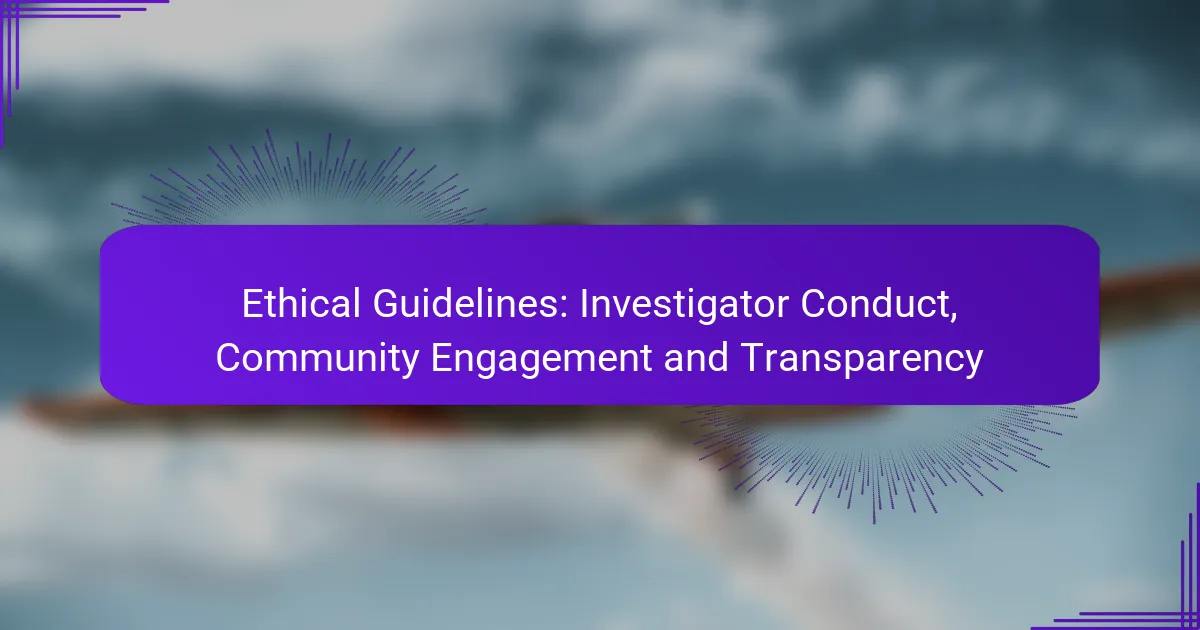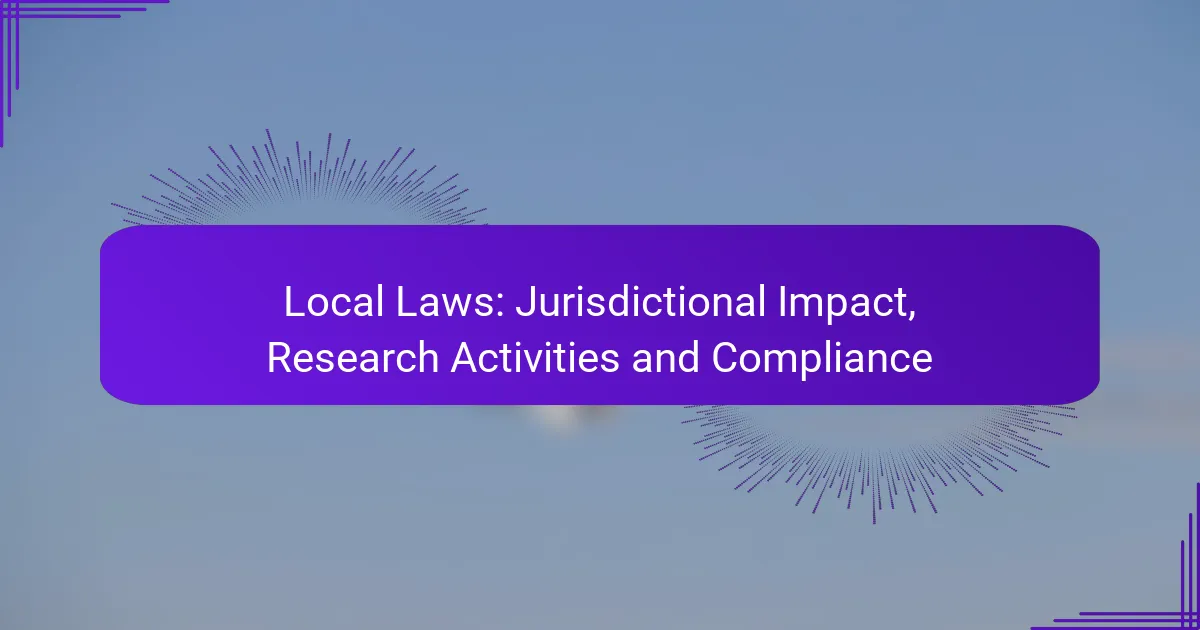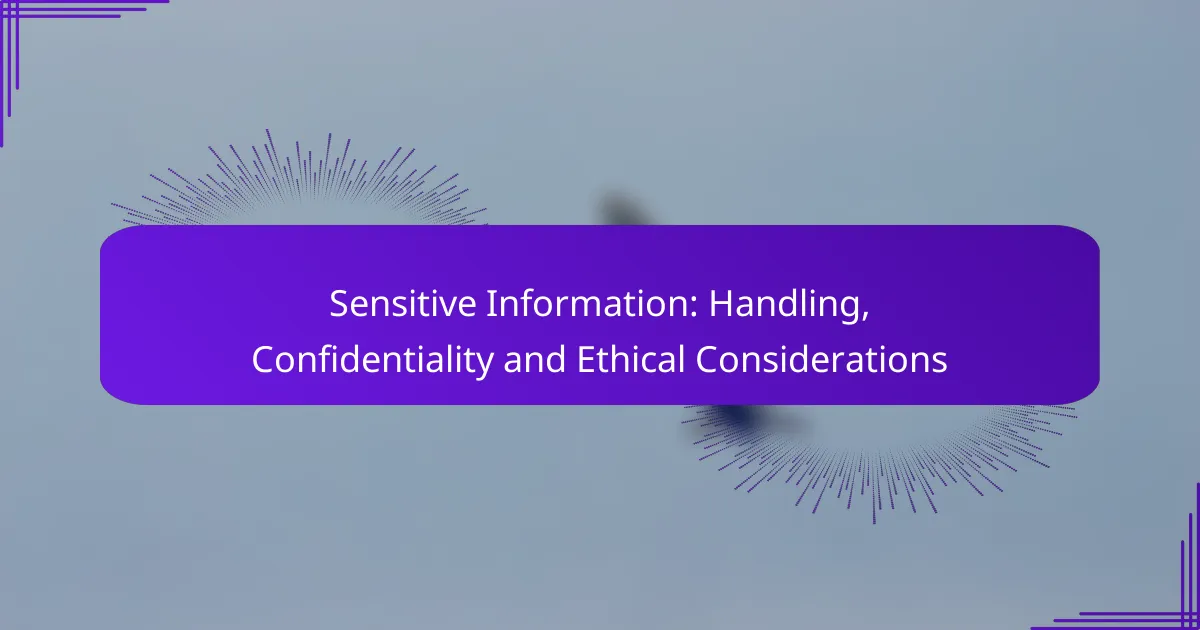Acquiring permission for research and projects at historical locations is essential for ensuring compliance with legal and cultural standards. This process involves meticulous documentation, engagement with local authorities, and a clear understanding of the specific legal requirements that vary by location and project type. By following best practices, organizations can foster positive relationships with communities while respecting their cultural heritage.

What are the best practices for permission acquisition in historical locations?
Best practices for permission acquisition in historical locations involve thorough documentation, engagement with local authorities, and adherence to relevant laws. These steps ensure that projects respect cultural heritage and legal requirements while fostering community relationships.
Documenting consent processes
Documenting consent processes is crucial for transparency and accountability. This includes keeping detailed records of all communications, agreements, and permissions obtained from stakeholders. A well-organized system can help avoid disputes and clarify responsibilities.
Consider using a standardized template for consent forms that outlines the scope of the project, the rights of the participants, and how their contributions will be used. This can streamline the process and ensure that all necessary information is captured.
Engaging with local authorities
Engaging with local authorities is essential for navigating the complexities of historical site permissions. Authorities can provide guidance on necessary permits and help identify any specific community concerns that should be addressed. Building a rapport with these officials can facilitate smoother approval processes.
Regular meetings or consultations with local heritage organizations can also enhance collaboration and demonstrate respect for the community’s cultural significance. This proactive approach can lead to valuable insights and support for your project.
Utilizing digital consent forms
Utilizing digital consent forms can streamline the permission acquisition process and improve accessibility. Digital forms allow for easy distribution and collection of consent, making it simpler to manage responses and track approvals. They can also be designed to include necessary legal disclaimers and information.
Ensure that digital consent forms comply with data protection regulations, such as GDPR in Europe, to safeguard personal information. Providing clear instructions and support for filling out these forms can enhance user experience and increase participation rates.
Ensuring compliance with heritage laws
Ensuring compliance with heritage laws is vital when working in historical locations. Familiarize yourself with local, national, and international regulations that govern the preservation of cultural sites. This knowledge will help you avoid legal pitfalls and respect the integrity of the location.
Regularly consult with legal experts or heritage professionals to stay updated on any changes in legislation. Implementing a compliance checklist can help ensure that all necessary permits are obtained and that your project aligns with heritage preservation standards.
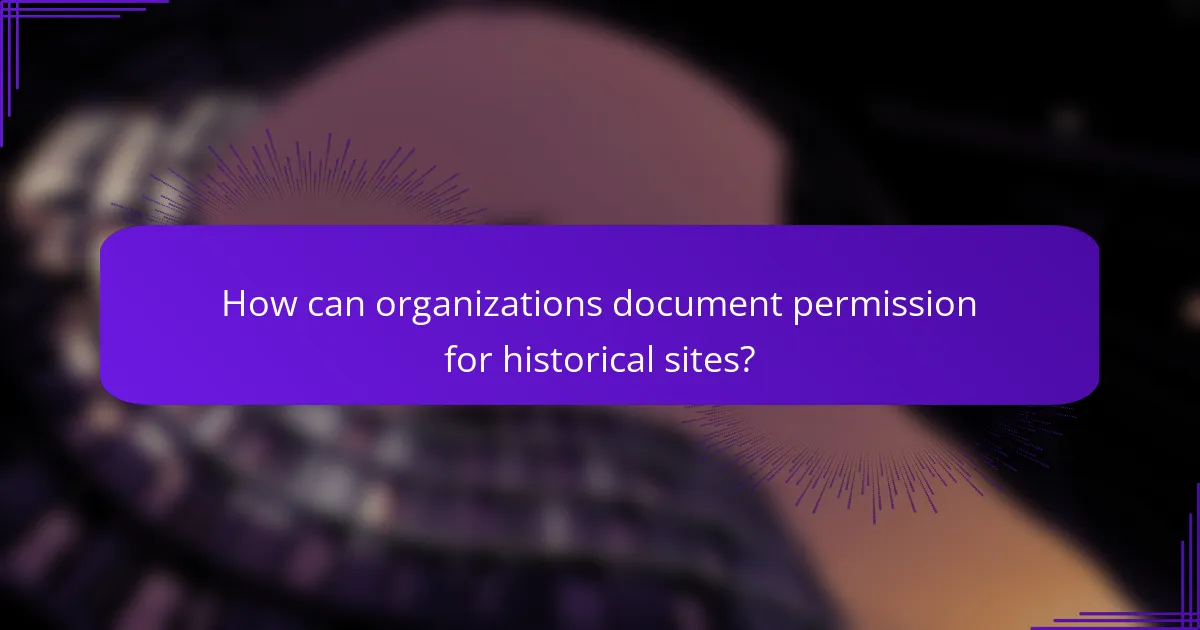
How can organizations document permission for historical sites?
Organizations can document permission for historical sites by creating comprehensive records that detail consent from relevant authorities or stakeholders. This process ensures legal compliance and fosters transparency in the use of historical locations.
Creating detailed records
Detailed records should include information such as the date of permission, the names of individuals or organizations granting consent, and specific terms of use. It is advisable to maintain a chronological log to track any changes or updates in permissions over time.
Additionally, organizations should consider including photographs or maps of the historical site to provide context. This visual documentation can help clarify the scope of the permission granted.
Using standardized templates
Standardized templates streamline the documentation process and ensure consistency across different historical sites. These templates should include sections for all necessary information, such as the purpose of the visit, duration of access, and any restrictions imposed.
Utilizing templates can also facilitate easier review and approval by stakeholders. Organizations can customize these templates to suit specific needs while adhering to a common format.
Implementing digital archiving solutions
Digital archiving solutions enhance the accessibility and security of permission documents. By storing records in a centralized digital repository, organizations can easily retrieve and share information as needed.
When selecting a digital archiving solution, consider factors such as user-friendliness, data security, and compliance with local regulations. Regular backups and updates are essential to ensure the longevity and integrity of the archived data.

What are the legal requirements for consent in historical research?
Legal requirements for consent in historical research typically involve obtaining permission from relevant authorities or stakeholders before accessing or using historical sites and documents. These requirements can vary significantly based on location, type of research, and the nature of the materials involved.
Understanding local regulations
Local regulations dictate how researchers must approach consent for historical research. These rules can include zoning laws, heritage protection statutes, and specific guidelines for archaeological sites. Familiarizing yourself with these regulations is crucial to ensure compliance and avoid legal issues.
For example, in many European countries, researchers may need to consult national heritage agencies or local councils to understand the specific permissions required for accessing historical locations. Ignoring these regulations can lead to fines or project delays.
Identifying necessary permits
Identifying the necessary permits is essential for conducting historical research legally. Depending on the research scope, you may need permits for excavation, photography, or accessing restricted archives. Each type of permit may have different application processes and timelines.
For instance, in the United States, researchers often require permits from state historical societies or local governments when working on archaeological sites. It is advisable to start the permit application process early, as it can take weeks or months to obtain the necessary approvals.
Consulting legal experts
Consulting legal experts can provide valuable guidance on navigating the complexities of consent in historical research. Legal professionals with experience in cultural heritage law can help identify applicable regulations and ensure that all necessary permissions are secured.
Engaging a legal expert early in your project can save time and resources by preventing potential legal challenges. They can also assist in drafting consent agreements and navigating negotiations with stakeholders, ensuring that your research complies with all legal requirements.

How to obtain consent from stakeholders in historical projects?
Obtaining consent from stakeholders in historical projects involves engaging with individuals or groups who have a vested interest in the project. This process ensures that their perspectives and concerns are considered, fostering collaboration and support.
Conducting stakeholder interviews
Conducting stakeholder interviews is a direct way to gather insights and opinions from key individuals. Prepare open-ended questions that encourage detailed responses, focusing on their views regarding the historical project. Aim for interviews to last between 30 to 60 minutes, allowing ample time for discussion.
When scheduling interviews, consider the availability of stakeholders and choose a comfortable setting for them. Take detailed notes or record the sessions (with permission) to accurately capture their feedback. This method builds rapport and demonstrates respect for their input.
Facilitating community meetings
Facilitating community meetings allows for broader engagement with stakeholders. Organize meetings in accessible locations and promote them through local channels to ensure diverse participation. Aim for a mix of formats, such as presentations and open discussions, to cater to different communication styles.
During these meetings, clearly outline the project’s goals and how community input will shape its direction. Encourage questions and feedback, and be prepared to address concerns. Document the discussions and follow up with participants to keep them informed of any developments.
Utilizing surveys for feedback
Utilizing surveys for feedback is an efficient way to gather opinions from a larger audience. Design surveys with clear, concise questions that can be answered quickly, ideally taking no more than 10 minutes to complete. Include a mix of multiple-choice and open-ended questions to capture both quantitative and qualitative data.
Distribute surveys through various channels, such as email, social media, or community boards, to reach a wider demographic. Analyze the results to identify common themes and concerns, which can guide decision-making in the project. Ensure that respondents’ anonymity is respected to encourage honest feedback.
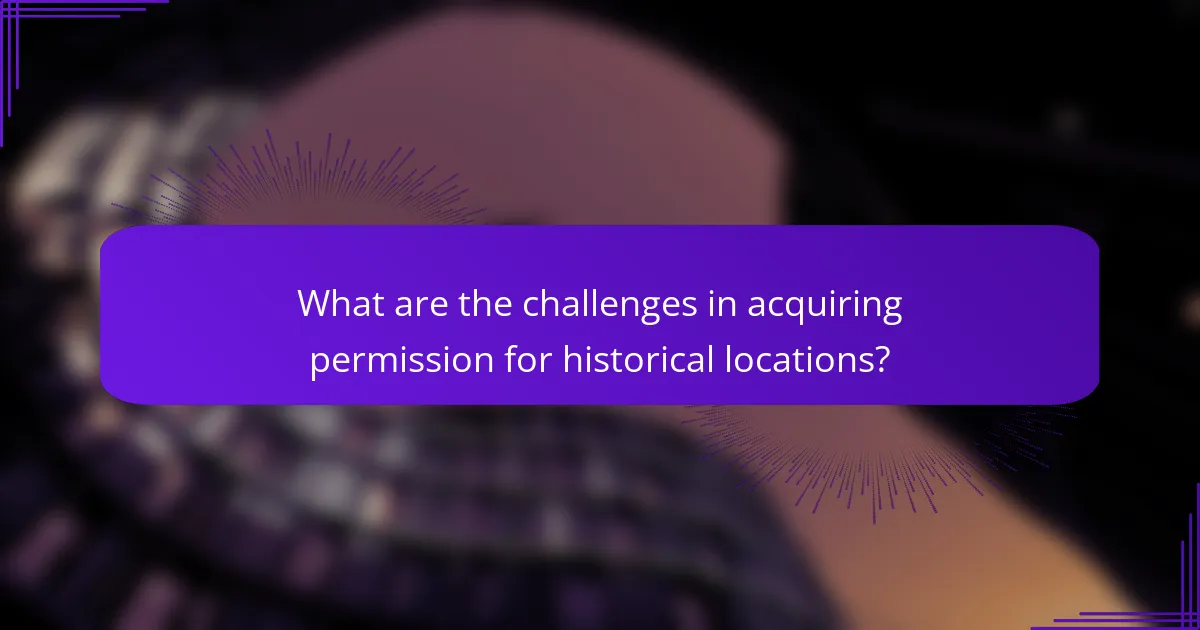
What are the challenges in acquiring permission for historical locations?
Acquiring permission for historical locations involves navigating complex regulations, addressing community concerns, and managing conflicting interests. These challenges can significantly impact the feasibility and timeline of projects aimed at preserving or utilizing such sites.
Navigating bureaucratic processes
Bureaucratic processes for acquiring permissions often involve multiple layers of government and various regulatory bodies. Each entity may have its own requirements, leading to potential delays and complications. It is essential to understand local regulations and timelines, which can vary widely by region.
For example, in some countries, obtaining a permit might take several months, while in others, it could be expedited. Familiarizing yourself with the specific documentation required, such as historical assessments or environmental impact studies, can streamline the process.
Addressing community concerns
Community concerns play a crucial role in the permission acquisition process for historical locations. Local residents may have emotional or cultural attachments to these sites, leading to resistance against proposed changes or developments. Engaging with the community early in the process can help mitigate opposition and foster support.
Consider hosting public meetings or informational sessions to address questions and gather feedback. Demonstrating respect for local history and involving community members in decision-making can enhance trust and cooperation.
Managing conflicting interests
Conflicting interests often arise between stakeholders such as developers, preservationists, and local governments. Each party may have different priorities, which can complicate negotiations and slow down the acquisition process. Identifying these interests early can help in finding common ground.
For instance, developers may prioritize economic benefits, while preservationists focus on historical integrity. Establishing a dialogue that acknowledges these differing perspectives can lead to creative solutions, such as adaptive reuse projects that satisfy both parties.

What frameworks exist for ethical permission acquisition?
Ethical permission acquisition frameworks provide guidelines for obtaining consent in various contexts, particularly when dealing with historical locations and documentation. These frameworks emphasize transparency, respect for individuals’ rights, and adherence to legal standards.
Informed Consent
Informed consent is a fundamental principle in ethical permission acquisition. It requires that individuals are fully aware of what they are consenting to, including the purpose of data collection and how it will be used. This process often involves providing clear, accessible information and allowing individuals to ask questions before giving their consent.
For example, when documenting a historical site, researchers should explain how the information will be used, whether it will be published, and who will have access to it. This transparency helps build trust and ensures that individuals feel comfortable with the process.
Community Engagement
Community engagement is crucial in permission acquisition, especially in culturally sensitive contexts. Engaging with local communities allows for a more collaborative approach to obtaining consent. This can involve meetings, discussions, and feedback sessions to ensure that community members feel their voices are heard.
For instance, when working on projects related to indigenous historical sites, it is essential to involve community leaders and members in the decision-making process. This not only fosters respect but also enhances the quality of the research by incorporating local knowledge and perspectives.
Legal Compliance
Legal compliance is a vital aspect of ethical permission acquisition. Researchers must be aware of and adhere to relevant laws and regulations regarding consent and data protection. This includes understanding local laws that may govern the use of historical documentation and the rights of individuals involved.
In the European Union, for example, the General Data Protection Regulation (GDPR) sets strict guidelines on how personal data should be handled, including the need for explicit consent. Familiarizing oneself with these regulations is essential to avoid legal pitfalls and ensure ethical practices.

